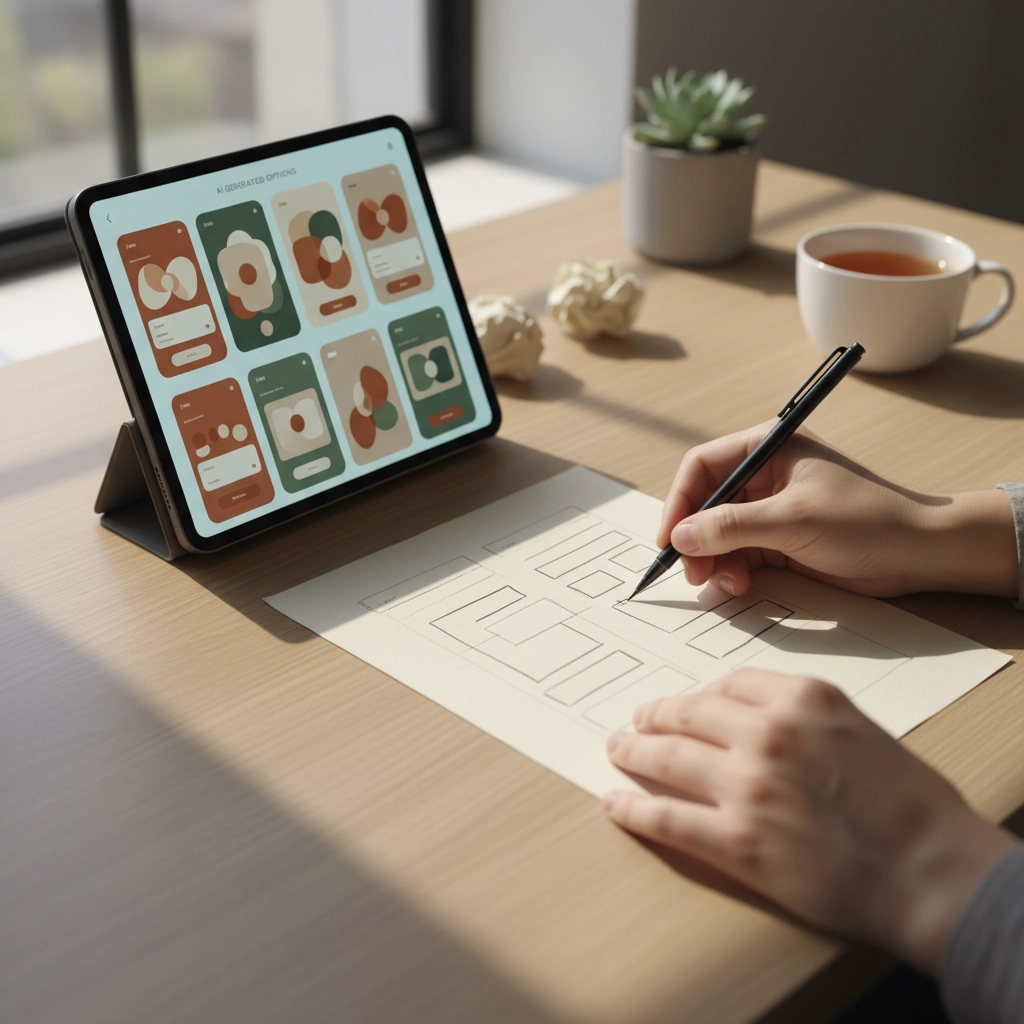Right, let's get one thing straight, I've been designing websites for years, and honestly? AI-powered web design isn't just some flashy buzzword that'll disappear next month. It's the real deal, and if you're still hand-coding every pixel like it's 2015, we need to talk.
What Actually Is AI-Powered Web Design?
Think of it like having a ridiculously talented design assistant who never sleeps, never gets cranky about revisions, and somehow knows exactly what your users want before they do. AI-powered web design uses machine learning to automatically create, customize, and optimize websites by analyzing user behavior and applying algorithms that would make your head spin.
Instead of staring at a blank canvas wondering where to put that bloody navigation menu, you literally describe what you want, and boom, fully functional, responsive website. It's like having a conversation with your computer, except it actually listens and doesn't judge your questionable design choices from 2010.

How This Magic Actually Works
Here's where it gets properly interesting. You tell the AI something like "I need a website for my artisan coffee shop that feels warm and welcoming but also modern," and it doesn't just slap together some generic template. No, no, no.
The AI analyzes millions of successful websites, understands what makes people click, scroll, and actually buy things. It's looking at color psychology, user flow patterns, conversion rates: all the stuff that would take you weeks to research. Then it creates layouts that actually make sense, picks colors that work together (goodbye, neon green on hot pink), and even suggests content that doesn't sound like it was written by a robot having an existential crisis.
The natural language processing bit is particularly clever. You can literally say "make it more friendly" or "less corporate, more human," and it gets it. It's like having a design telepathy session, but with better results.
The Game-Changing Capabilities
Automated Design Generation That Doesn't Suck
I've seen too many auto-generated designs that look like they were created by someone who learned design from a cereal box. But AI has evolved. It's studying what actually works: analyzing user interaction patterns, conversion data, accessibility standards. When it creates multiple design variations, they're not just random shuffles of the same elements. Each one is strategically different, tested against real-world performance data.
The image generation alone is mental. Describe what you need, and instead of scrolling through 47 pages of stock photos of people pointing at laptops with unnaturally large smiles, you get exactly what you envisioned. Custom graphics, unique layouts, original imagery that actually fits your brand instead of looking like every other website on the internet.

Personalization That's Actually Personal
Here's what I love about AI personalization: it's not just showing different banner images based on someone's location. It's properly intelligent. The website learns from each visitor and adapts in real-time. Someone who bounces after 10 seconds gets a completely different experience than someone who reads every blog post.
It tracks interaction patterns (ethically, before you ask), understands user intent, and customizes everything from navigation structure to product recommendations. It's like having a really attentive salesperson who remembers exactly what each customer likes, except it can handle thousands of people simultaneously without needing coffee breaks.
Why This Changes Everything
Speed Without Compromise
Traditional web design is slow. I know because I've lived it: briefing sessions, wireframes, mockups, revisions, more revisions, coding, testing, more revisions. Weeks turn into months. AI compresses this timeline dramatically while somehow maintaining (and often improving) quality standards.
What used to take my team weeks now takes minutes for the initial build. But here's the kicker: it's not sacrificing quality for speed. The AI is applying best practices automatically, ensuring mobile responsiveness, accessibility compliance, and performance optimization without you having to think about it.

No More Code Barrier
Look, I love code. There's something satisfying about building something from scratch. But let's be realistic: not everyone needs to become a developer to have a professional website. AI removes that barrier entirely.
You don't need to understand CSS grid or JavaScript frameworks. You don't need to debug cross-browser compatibility issues at 2 AM. The AI handles the technical complexity while you focus on what actually matters: your business, your content, your customers.
Data-Driven Design Decisions
Here's what I find fascinating: AI doesn't make design decisions based on what looks cool or follows the latest trends. It makes decisions based on data. Real user behavior, actual conversion patterns, proven accessibility standards.
Every color choice, every button placement, every navigation structure is backed by analysis of what works. It's like having access to every successful website's performance data and applying those insights to your project.
The Reality Check
Is AI perfect? Absolutely not. Will it replace human creativity and strategic thinking? Not a chance. But as a tool for rapidly prototyping, testing ideas, and handling technical implementation? It's revolutionary.
I still believe in human insight, brand strategy, and creative direction. But I also believe in working smarter, not harder. AI-powered web design isn't about replacing designers: it's about amplifying what we can achieve.

What This Means for You
If you're running a business and your website feels like it was built in the stone age, AI-powered design could be your fast track to something that actually converts visitors into customers. If you're a designer worried about being replaced, stop worrying and start learning how to work with these tools.
The future isn't about choosing between human creativity and AI efficiency: it's about combining both to create digital experiences that are faster to build, more effective at converting, and actually enjoyable to use.
And honestly? In a world where attention spans are shorter than a TikTok video and first impressions happen in milliseconds, having a website that intelligently adapts to each visitor isn't just nice to have: it's essential.
The AI revolution in web design is happening whether we're ready or not. The question isn't if you should pay attention, but how quickly you can adapt and use it to your advantage.